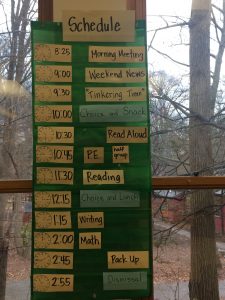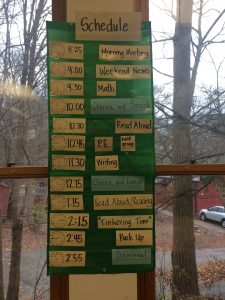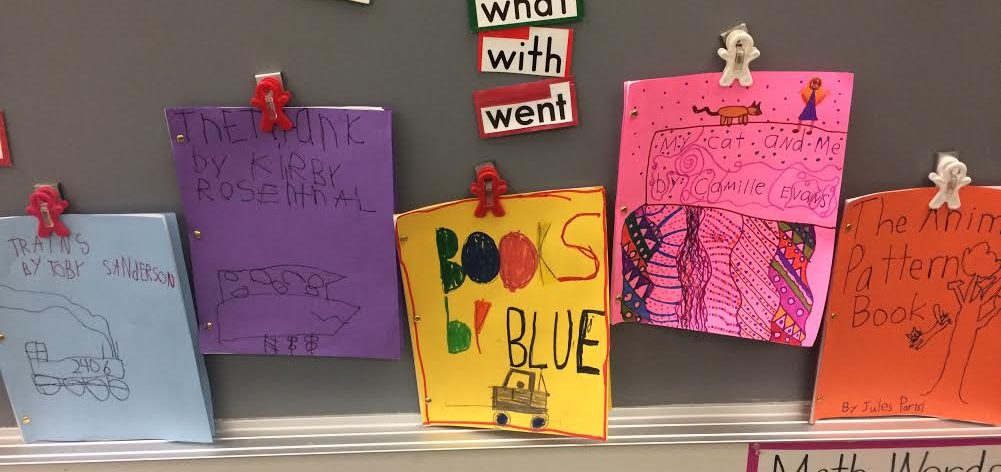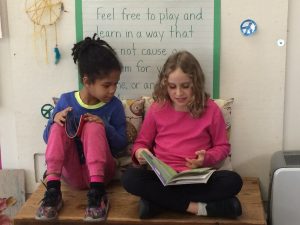Reflecting Upon What Works (and What Doesn’t) for Our Kids
Imagine asking 21 marathon runners to do a sprint at the end of their 26.2 mile race.
That is sort of how Rich and I felt each day as we asked our six, seven, and eight-year-olds to participate in math and Writer’s Workshop for the last hour and a half of the school day. Each day was becoming a struggle to keep students focused and on-task. This flies in contrast to the way that we think about children and learning: childhood should be fun, and children should find joy in learning. Nonetheless, as Rich and I both value the importance of predictable schedules for our young learners, we clung to this schedule in hopes that our students would adjust.
As September and October rolled on and we continued to observe and reflect, we eventually came to realize that our existing schedule really did work in opposition to our group’s developmental needs. The children’s daily fatigue was a sign that we were trying to convince our students to follow our plan rather than let them lead the way. As we have learned so many times, it’s usually a mistake to not let children lead!
By November, we finally decided to make a change. We began the process by analyzing when our students are most focused and found it to be during the first learning block of the day and during half group times in the middle of the day. In response, we moved math and writing to those periods and self-initiated learning time to the afternoon.
 Our old schedule with writing and math in the afternoon.
Our old schedule with writing and math in the afternoon. Our current schedule with math and writing during the morning and middle blocks.
Our current schedule with math and writing during the morning and middle blocks.
Our new schedule provides an “up and down pace” that young students need to learn well and not be exhausted by the end of the day. We are now seeing focused, morning mathematicians who are not only excited to play games, but are focused enough to enter into “Number Talks”–student-led number discussions through which students share computation ideas for up to fifteen consecutive minutes. Number Talks are essential for building math confidence, generating ideas, building number flexibility, and developing a strong foundation in number sense. Engaging in a discussion for this length actually exceeds our developmental expectations for how long a child can sit.
We also moved our writing block to the middle of the day during half group time. For the first fifteen minutes of this block, students receive small group phonics instruction. Immediately after, students participate in a Writer’s Workshop mini-lesson and then write independently, pursuing their own writing projects. That is quite a lot to fit into a small block, but the students still have the stamina at this point of the day. Of course, there is the added benefit of having ten children and two teachers (or three with Rossana’s visits) in the room at this time! Since the switch, students have been able to create and publish pattern books with topics of their choosing. Students have written about the sinking of the Titanic, various books they love to read, holidays they adore, and activities they engage in with friends. Within a month, we were already moving onto our next unit: How To Books.
Our new post-lunch schedule is proving to be just what our students need, as well. After the excitement of Choice and Lunch, students are given a calm, reflection time for 15 minutes of Quiet Time. Story time is held at the beginning of each reading block and serves as a peaceful and engaging way to join with the whole group yet again. Students then enter into independent and/or partner reading during Readers’ Workshop. Our students are eager readers and they seem happy to engage in the calm of reading before entering the creative flourish that is our daily Tinkering Time.
We believe that every child is a thinker, creator, and contributor. Our new schedule optimizes students’ time to think, create, and contribute each day. Even more, we teachers feel more energized and are having more fun in the room. How lucky are we!





One Response to Reflecting Upon What Works (and What Doesn’t) for Our Kids